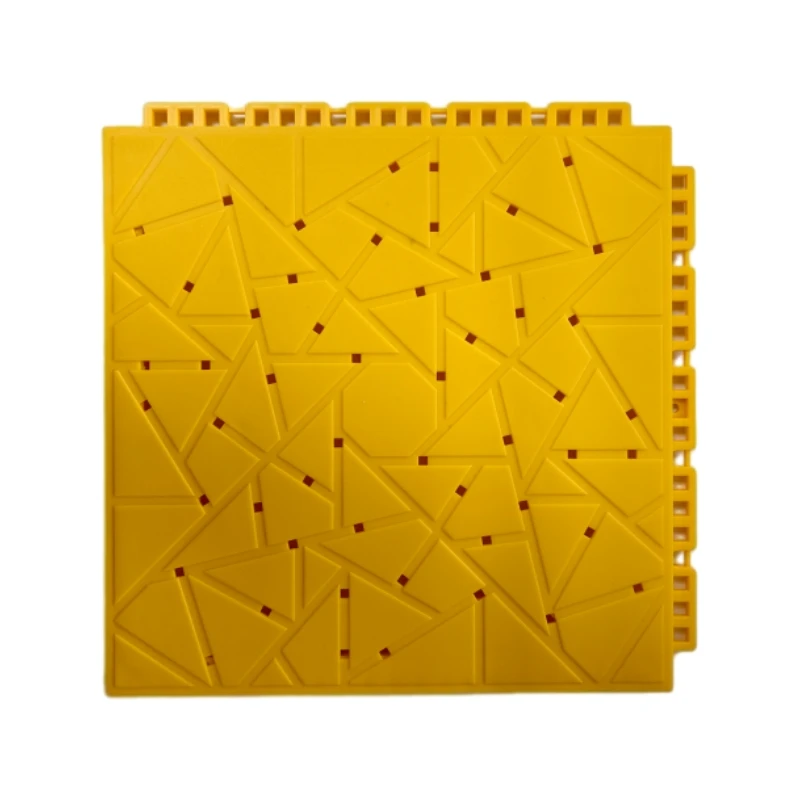Innovative Artificial Flooring Solutions for Enhanced Tennis Court Performance and Durability
The Rise of Artificial Flooring for Tennis Courts
Tennis has long been cherished as a sport that combines physical prowess, strategic thinking, and enduring tradition. While the game has remained largely unchanged over the years, the surfaces upon which it is played have evolved. One of the most significant advancements in this regard is the introduction of artificial flooring for tennis courts. This innovation is not just a trend but a transformative change that improves performance, enhances safety, and facilitates year-round play.
Benefits of Artificial Flooring
Artificial flooring, which encompasses a variety of surfaces including synthetic grass, acrylic, and rubber, offers numerous advantages over traditional options such as clay or grass courts. One of the most compelling benefits is consistency. Natural grass can be unpredictable; its playability fluctuates based on weather conditions and maintenance practices. Rain can lead to muddy, unplayable conditions, while excessive sun can harden the ground, leading to an uneven bounce. Conversely, artificial surfaces are engineered to provide uniformity regardless of external elements, ensuring a consistent playing experience.
Moreover, the durability of artificial courts is noteworthy. While natural surfaces require regular upkeep—mowing, watering, and resurfacing—synthetic materials stand the test of time with minimal maintenance. They resist wear and tear from constant play, reducing long-term costs for clubs and facilities. This durability translates into an improved return on investment, as clubs can play matches and host tournaments without significant interruptions for maintenance.
Safety and Performance
Player safety is paramount in any sport, and tennis is no exception. Traditional surfaces can lead to higher injury rates due to uneven terrain and inadequate shock absorption. Artificial flooring is designed with safety in mind. Many synthetic surfaces incorporate cushioning layers, providing better shock absorption to reduce stress on players’ joints. This feature is crucial in a sport known for its quick lateral movements, which can be tough on knees and ankles.
artificial flooring for tennis court

In terms of performance, artificial surfaces can be tailored to promote specific playing styles. For example, fast surfaces might favor aggressive players who rely on quick serves and volleys, while slower surfaces can benefit baseline players known for their endurance and strategic play. This customization allows clubs to cater to their members’ preferences and to create diverse playing conditions that challenge players and enhance their skills.
Year-Round Use
One of the most attractive aspects of artificial flooring is its ability to facilitate year-round play, regardless of climate. In regions where winter temperatures plunge, clubs can construct indoor facilities with artificial surfaces, allowing tennis to be played throughout the year. This adaptability not only encourages more frequent play among enthusiasts but also widens participation in the sport. Clubs can host tournaments and league matches without worrying about weather-related cancellations, creating a more robust tennis community.
Environmental Considerations
As with any innovation, the environmental impact of artificial flooring cannot be overlooked. Manufacturers are increasingly moving towards eco-friendly materials, aiming to minimize their carbon footprint. Advances in technology allow for the creation of synthetic surfaces that are recyclable and made from sustainable resources. Additionally, the reduced need for water and chemicals for maintenance significantly lessens the environmental strain compared to traditional grass courts. This shift towards sustainable practices reflects a growing awareness and responsibility towards environmental conservation within the sports industry.
Conclusion
Artificial flooring for tennis courts represents a significant evolution in the sport, marrying tradition with technological advancements. Its benefits—consistency, durability, safety, adaptability, and environmental consciousness—position it as a viable and appealing alternative to traditional surfaces. As clubs and facilities continue to adopt these innovative materials, players can expect a better playing experience, characterized by improved conditions and enhanced safety. The future of tennis is undoubtedly bright with the integration of artificial flooring, encouraging players of all levels to engage with the sport in new and exciting ways. Embracing this innovation not only enhances individual experiences but also fosters a thriving tennis community for the generations to come.
-
Commercial Parquet Flooring: Considerations of Aesthetics, Practicality, And SustainabilityNewsApr.15,2025
-
PVC Sports Flooring: Performance, Applications, And Development TrendsNewsApr.15,2025
-
PP Interlocking Floor: a Paving Solution That Combines Functionality and SustainabilityNewsApr.15,2025
-
Plastic Flooring Tiles Outdoor: Practicality, Sustainability, And Development ProspectsNewsApr.15,2025
-
On the Application of PVC Flooring for Badminton Court in Badminton VenuesNewsApr.15,2025
-
Commercial Wood Flooring: the Balance Between Aesthetics, Functionality, And SustainabilityNewsApr.15,2025
-
The Ultimate Guide to Futsal FlooringNewsMar.27,2025

